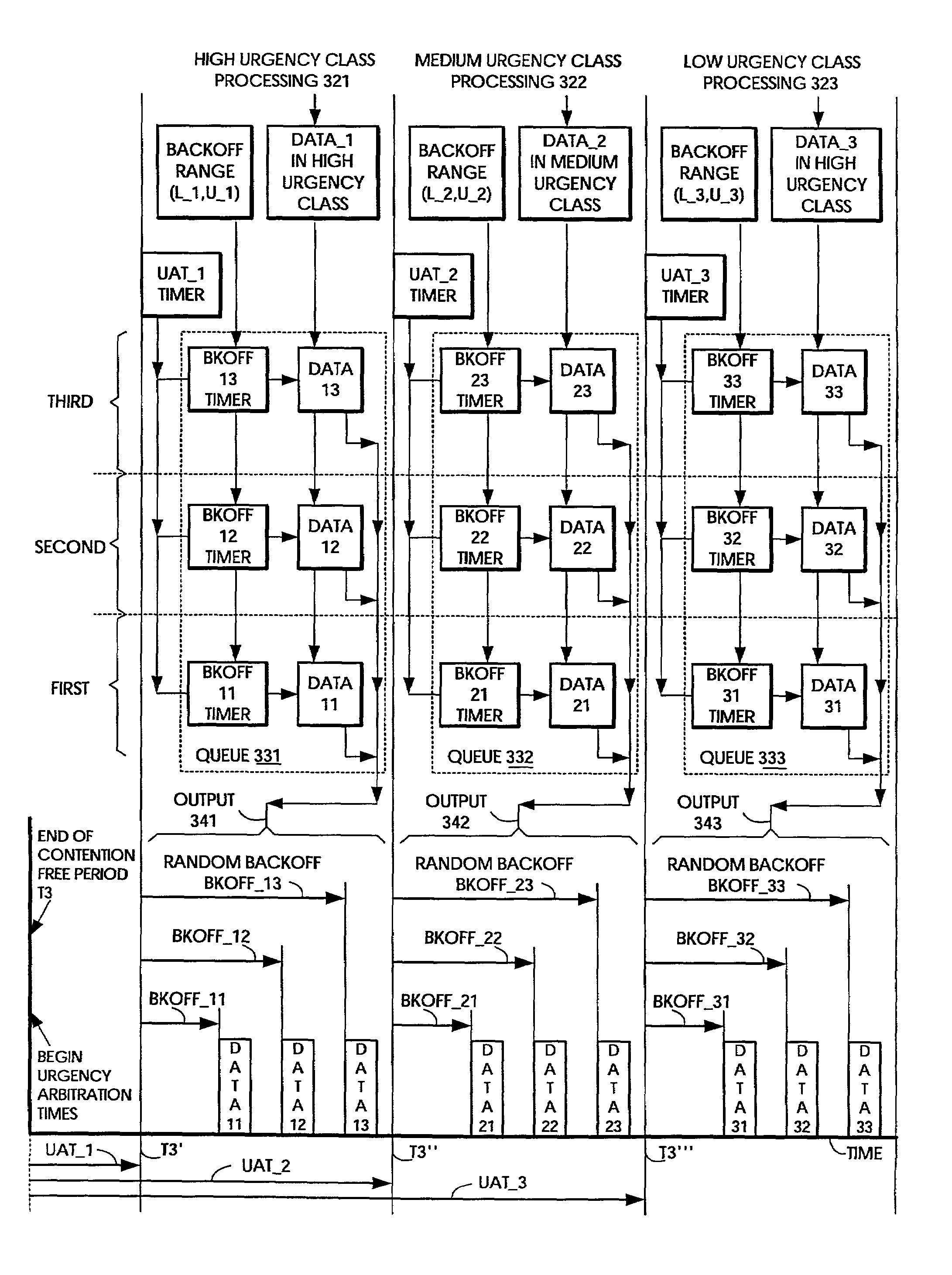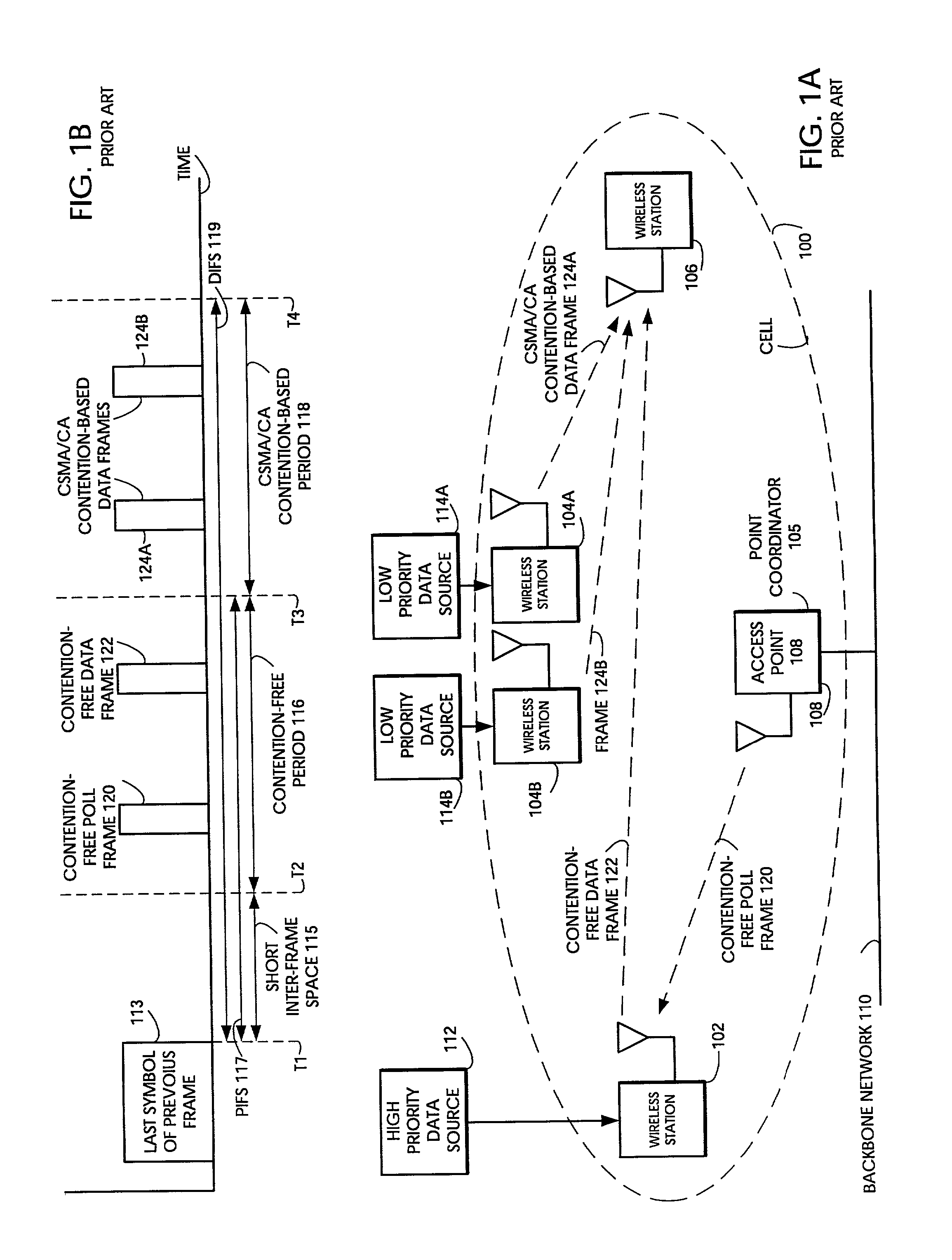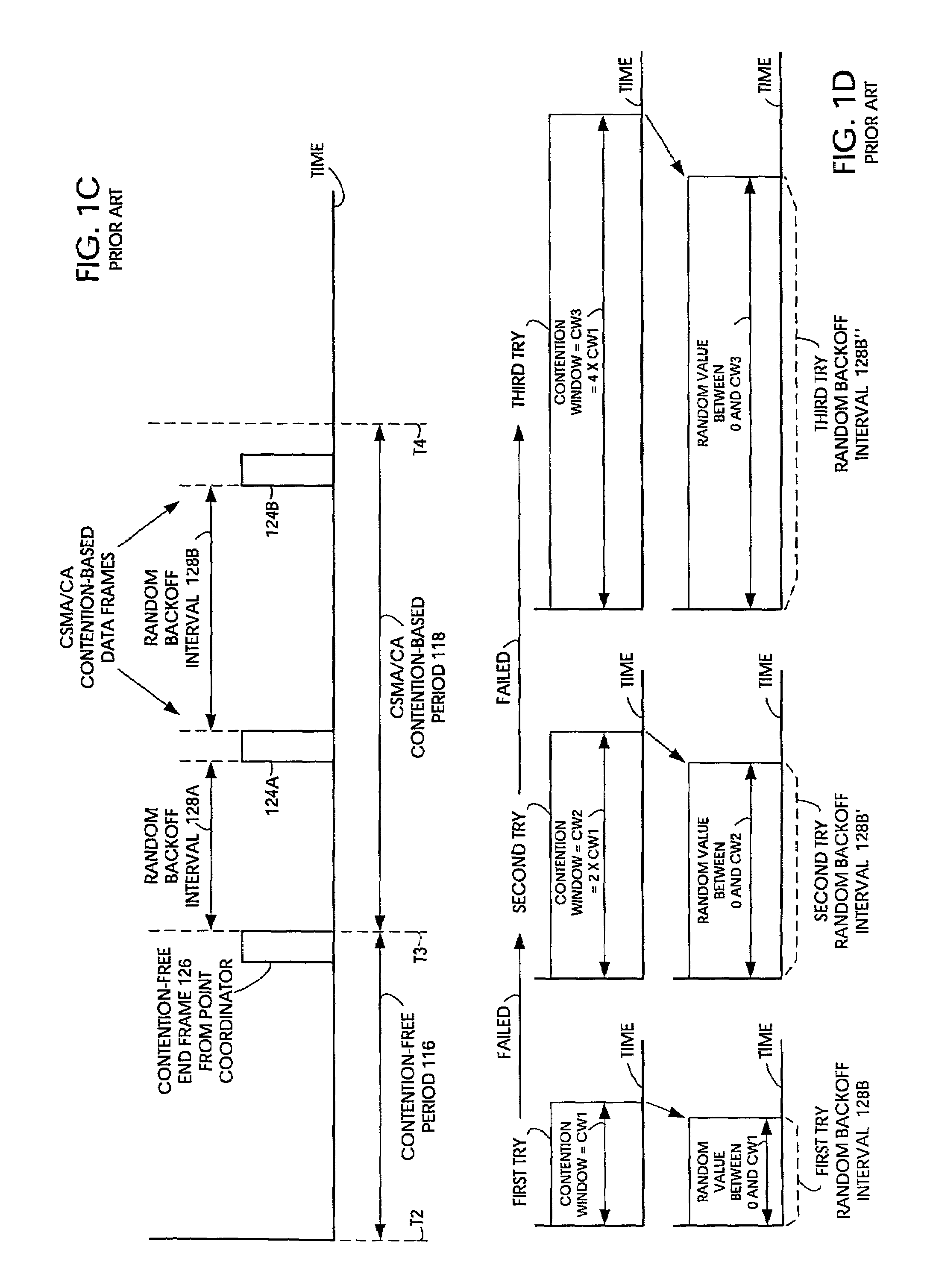Random medium access methods with backoff adaptation to traffic
a random medium access and traffic technology, applied in the field of telecommunication methods, can solve problems such as preventing back-to-back re-transmission, protocol instability, and protocol also suffering from hidden terminal problems
- Summary
- Abstract
- Description
- Claims
- Application Information
AI Technical Summary
Benefits of technology
Problems solved by technology
Method used
Image
Examples
numerical example
[0314]Table 7 illustrates the mapping of old to new backoff counter values for different starting backoff counter values, given the scale-up step size R=½.
[0315]
TABLE 7Backoff expansion transformation for fractional adjustment factorsXIX. CRmE[m′]Probm′1.511.5½ 1½ 223.0⅙ 2⅓ 3⅙ 434.5½ 4½ 546.0⅙ 5⅓ 6⅙ 7575½ 6½ 769.0⅙ 8⅓ 9⅙10710.5½ 9½10812.0⅙11⅓12⅙13913.5½12½131015.0⅙13⅓14⅙15
[0316]One can verify that the new backoff values m′ generated above are uniformly distributed, given that the old backoff values m were also uniformly distributed. That is, each of the scaled values will occur with the same probability because it will be obtained from scaling an equal proportion of the existing residual backoff values in backlogged stations.
[0317]Only backoff values greater than 1 are scaled down. Table 8 illustrates the mapping of old to new backoff counter values for a scale-down step size D=⅓, for different starting backoff counter values.
[0318]
TABLE 8Backoff compression transformation for fract...
example 1
Estimates b1
[0377]Determine desired scaling step size ST and specify constants
CR=ST+1, and
[0378]CD=1(ST+1)
nstart=average·number·of·terminals
[0379]pstart=1U+1;
where U is the upper bound on the starting backoff distribution
bstart=nstart·pstart
[0380]Algorithm Logic
[0381]Step 0 Initialize
n0=nstart;
p1=pstart;
b0=bstart
[0382]Block A [Perform the following steps repeatedly.]
[0383]Step 0 Estimate b1, the number of backlogged stations with backoff value equal to 1, using feedback data and the Estimation Procedure1. 1 An Estimation Procedure is presented below.
[0384]Step 1 Invoke Block S [Scaling check]
[0385]Step 3 End of Block A
[0386]Block S [Scaling check]
[0387]Step 0 Check whether scaling up is required; that is, if b1≧CR, go to Step 1; otherwise, go to Step 2.
[0388]Step 1 Invoke the Scaling Algorithm to scale up by the adjustment factor R=ST
[0389]update p1←p1·CD;
[0390]set b0=b1; and
[0391]go to Step 5.
[0392]Step 2 Check whether scaling down is required; that is, if 2·p1≦b1≦CD, go to Step 3...
example 2
Estimates n1
[0399]Determine desired scaling step size ST and specify constants
CR=ST+1, and
[0400]CD=1(ST+1)
nstart=average·number·of·terminals
[0401]pstart=1U+1
[0402]where U is the upper bound on the starting backoff distribution
[0403]Algorithm Logic
[0404]Step 0 Initialize
n0=nstart;
p1=pstart;
[0405]Block A [Perform the following steps repeatedly.]
[0406]Step 0 Estimate n1, the number of backlogged stations with backoff value equal to 1, using feedback data and the Estimation Procedure2. 2 An Estimation Procedure is presented below.
[0407]Step 1 Invoke Block S [Scaling check]
[0408]Step 2 End of Block A
[0409]Block S [Scaling check]
[0410]Step 0 Check whether scaling up is required; that is, if n1·p1≧CR, go to Step 1; otherwise, go to Step 2.
[0411]Step 1 Invoke the Scaling Algorithm to scale up by the adjustment factor R=ST
[0412]update p1←p1·CD;
[0413]set n0=n1; and
[0414]go to Step 5.
[0415]Step 2 Check whether scaling down is required; that is, if 2≦n1 and n1·p1≦CD, go to Step 3; otherwise, g...
PUM
 Login to View More
Login to View More Abstract
Description
Claims
Application Information
 Login to View More
Login to View More - R&D
- Intellectual Property
- Life Sciences
- Materials
- Tech Scout
- Unparalleled Data Quality
- Higher Quality Content
- 60% Fewer Hallucinations
Browse by: Latest US Patents, China's latest patents, Technical Efficacy Thesaurus, Application Domain, Technology Topic, Popular Technical Reports.
© 2025 PatSnap. All rights reserved.Legal|Privacy policy|Modern Slavery Act Transparency Statement|Sitemap|About US| Contact US: help@patsnap.com



